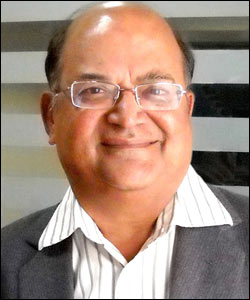That cue to a strong ad line for pressure cookers resonated with its middle-class audience
So, do you really love your wife? Now isn’t that a leading question? Almost as bad as ‘Have you stopped beating your wife?’. But to someone who started his advertising life nearly three decades ago, it’s a cue to a strong and hardworking advertising line which said ‘Jo biwi se kare pyar, woh Prestige se kaise kare inkaar?’. It’s quite likely that what I’m saying means nothing to you, so let me try and jog your memory by directing you to an old TV commercial that created waves when it first aired.
Matter of ‘Prestige’
With all the razzmatazz, bells and whistles that today’s advertising is full of, this simple commercial, set at a dealer outlet of a multi-brand pressure cooker company may even be considered ordinary, but it certainly had its value then. It is a focused TV commercial set in a dowdy shop, with a typical middle-class couple going to purchase a pressure cooker.
The main character is a dealer who, in his typical frank and forthright way, asks the man: “How much do you love your wife?”. (In those days, and probably even today, people in India asked even strangers the most pointed of questions, such as: “So, what is your salary?” or “Why don’t you have a child yet?”.)
The dealer quickly explains that if the customer loved his wife even a little, he would give her an ordinary pressure cooker; if he loved her more he would give her a better one; but if he really loved his wife, he would give her a Prestige pressure cooker! When the bemused husband asks the dealer why Prestige, the latter explains that ‘the unique gasket release system of the Prestige pressure cooker was designed for husbands who really love their wives’.
Today, when we look at this ad, we might be bemused and wonder how it could have been so successful then (I can vouch for its success). One must not forget that this was when television advertising was in its nascent stages. It was before the days of computer graphics designed in London and television commercials shot in New Zealand. The ad had a strong idea that resonated with its middle-class audience and a tagline that, when carefully-handled, became brand property over the years.
But I am getting ahead of myself.
Good ads do the disappearing act
One of the greatest challenges with clients and advertising agencies is that they get tired of their campaigns long before their consumers do and are anxious to change them, even when the old ones are delivering results. After all, it’s boring to run the same commercial, however effective, year after year.
So, for quite a few years, Prestige went ahead with a variety of commercials, offers, and products, each different from the other, that bore no theme holding them all together. The advertising did not have the single-minded appeal it had in its initial years, even if the brand continued to do well.
Let’s not forget that Prestige was a dominant brand then, particularly in the Southern markets, where mothers continued to gift their newly-married daughters Prestige pressure cookers. It was not uncommon for the humble pressure cooker to make its way into elegantly designed houses in New Jersey or San Jose. And yet, something was missing and that was the emotive appeal of the husband’s love for the wife, which seemed to have lost its way.
Celebrity couple demonstrates love
Then, as expected, the brand realised that it had been sitting on a gold mine whose value it had refused to acknowledge. With the help of a star biwi and her husband — Aishwarya Rai and Abhishek Bachchan — it launched new commercials nationally.
The brand effectively capitalised on the idea that Prestige is the pressure cooker for husbands who love their wives, who deserve the best. Today, it has moved away from celebrities to ordinary couples, as this commercial in Tamil shows.
The brand’s advertising story continues and I am sure that it will be successful in the future.
So, what are the learnings?
Brands attain properties, usually created by good advertising over a period of time, that consumers easily recall and identify the brand with. It requires effort, resources and commitment to build a brand property. And, as the TTK Prestige example shows us, it is quite easy to lose sight of what you have. Brand managers should be vigilant to ensure that their brands don’t go off track though, sadly enough, it is often the advertising agency that is guilty of throwing the baby out with the bath water!
So, does your brand have a property? And are you ensuring that it is preserved?







